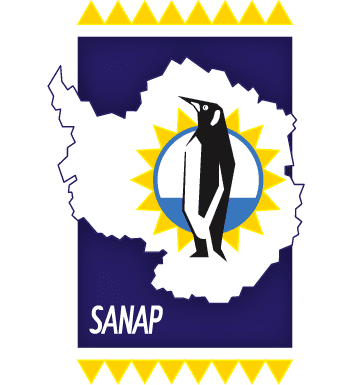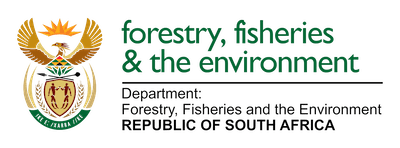Stations.
Discover
SANAE IV Antarctica.
After Norway’s announcement, during the second half of 1959, that its Station (Norway Station) in Queen Maud Land would be evacuated later in that year, and after South Africa had, on 1 December 1959, signed the Antarctic Treaty, together with 11 other countries, the first South African National Antarctic Expedition (SANAE) departed early in December of the same year on the Norwegian ship, the Polarbjørn, to take over the Norwegian Station. The ship reached the Antarctic coast near the Station on 8 January 1960 and commenced its return voyage 7 days later, after the South Africans had been deployed at the Norwegian Station.
Vesleskarvet is a nunatak which is a rocky outcrop peeping out of a snowy surface. In sharp contrast to the white surroundings, its colour is normally black or dark brown and, in some cases, able to support some sort of life, for instance mosses, algae, a few insects or birds, such as Roberts’ Kollen own Snow Petrel colony some 25 km from the SANAE IV Station.
SANAE’s research is divided into four programmes:
- Physical sciences
- Earth sciences
- Life sciences
- Oceanographic sciences
 SANAE IV
SANAE IV
Discover
Marion Island.
Marion Island is 19 km long and 12 km wide and the larger island of the two Prince Edward islands. The Prince Edward islands (Marion and Prince Edward) have a combined area of 316 square km and politically form part of South Africa’s Western Cape Province. The islands are volcanic in origin, with Marion having many hillocks (secondary craters) and small lakes. Prince Edward Island has spectacular cliffs up to 490m high on its south western side.
Marion is the higher of the two islands, and Mascarin Peak, its highest point at
1,230m. It is surrounded by a large number of secondary craters, betraying its
volcanic origin. There is little vegetation, except for lichen and a few moss species, in the island’s centre. Elsewhere the vegetation is mainly mosses and ferns, and the terrain is very boggy. This is due to the abundant snow and rain. There are no trees, due to the persistent, strong westerly winds commonly termed the Roaring Forties.
Research
Biological/environmental research is a major function of the Marion Island station (weather data collection being the other). A huge amount of scientific papers and dozens of post-graduate theses have been produced from research on Marion, and the long-term biological monitoring programmes provide exceptional research potential into the rate and impacts of climate change as a result of global warming.
The research on Marion Island focuses mainly on the following themes:
- Weather and climate studies
- The interactions between marine and terrestrial systems
- The life histories of seals, seabirds and killer whales
- The structure and functioning of terrestrial ecosystems
- The structure and functioning of near shore ecosystems
Open access geospatial database for Marion and Prince Edward Islands
Discover
Gough Island.
South Africa has been operating a weather station on Gough Island since 1956. Initially it was housed in the station at The Glen, but moved to the south western lowlands of the island in 1963 where weather observations are more accurate. This weather office operates the same as stations in South Africa with hourly climate observations and upper-air ascents.
Gough Island (also known historically as Diego Alvarez) is a volcanic island rising from the South Atlantic Ocean to heights of over 900 metres (2950 ft) above sea level with an area of 35 square miles (91 km²). It is a dependency of Tristan da Cunha, which in turn is a dependency of the British overseas territory of Saint Helena. The land the station is built on is leased by South Africa under contract and is magistrate as a district of Cape Town.
It is uninhabited except for the 8 to 10 expedition members of the weather station as part of the South African National Antarctic Programme (SANAP) and is thus one of the most remote places with a constant human presence. It is a lonely place, about 400 km southeast of the other islands in the Tristan da Cunha group, 2600 km from Cape Town, and over 3200 km from the nearest point of South America.
Topographic features include the highest Peak, Edinburgh Peak, Hags Tooth, Mount Rowett, Sea Elephant Bay, Quest Bay, and Hawkins Bay.
It includes small satellite islands and rocks such as Southwest Island, Saddle Island (South), Tristiana Rock, Isolda Rock (West), Round Island, Cone Island, Lot’s Wife, Church Rock (North), Penguin Island (Northeast), and The Admirals (East).
Gough and Inaccessible Islands form a protected wildlife reserve, which has been designated a World Heritage Site by UNESCO. It has been described as one of the least disrupted ecosystems of its kind and one of the best shelters for nesting seabirds in the Atlantic. In particular, it is host to almost the entire world population of the Tristan Albatross and the Atlantic Petrel. However, this status is now in doubt as in April 2007 researchers published evidence that predation by introduced house mice on seabird chicks is occurring at levels that might drive the Tristan Albatross and the Atlantic Petrel to extinction. The island is also home to the almost flightless Gough Island Moorhen.

 SANAE IV
SANAE IV



